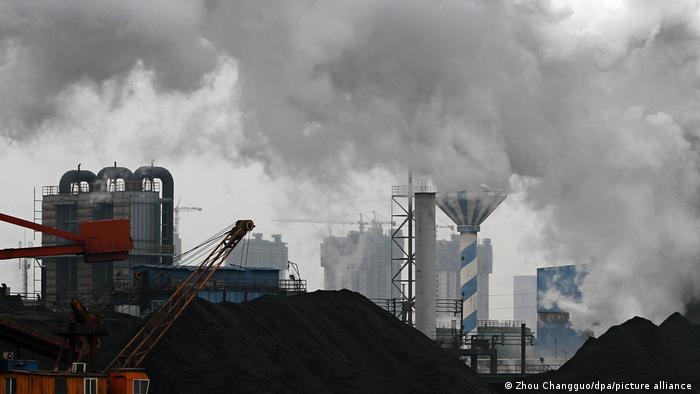It is the most used substance on Earth after water. It is essential in modern cities. It supports everything, from the roof that covers your head to the bridges and dams that make up the essential infrastructure.
Concrete, a marvel material that has revolutionized construction around the world and raised living standards, is one of the strongest drivers of global warming.
Global carbon dioxide emissions are dominated by the cement industry, which accounts for 8% of total global emissions. This is more than twice as much as shipping or flying. If it were a country, its annual pollution would be only surpassed by the US or China.
Each year, cement is used to build homes, motorways, flood defenses, and other structures. As more people move to cities from poorer countries, cement’s use will increase. This is because they are able to afford the same quality housing and infrastructure as those living in wealther areas of the world. China, which produces more than half of the world’s cement, has poured more cement in the last few years between 2011 and 2013 than the US in the entire 20th Century.
“The fundamental problem is that [concrete]It is extremely carbon intensive, it’s a definite problem. Yet, we probably will continue using more of it,” said Johanna Lehne from the Brussels-based climate think tank E3G.
Why climate-friendly concrete isn’t possible
Concrete has a simple recipe. Concrete is made by mixing aggregates (also known as rocks) with cement and water. These two ingredients combine to form a glue that binds the components together.
Concrete is so dirty because cement is made. To heat rotating kilns above 1400 degrees Celsius, manufacturers use fossil fuels. This is what turns limestones and clays into clinker, the main component of cement. The bulk of the CO2 is released by the chemical reaction that breaks down limestone.
Because cement production involves this process, there is no technology that can eliminate concrete’s emissions. Lehne stated that cement is not like the transport or power sectors. Concrete industry is not equipped with the equivalent of electric cars or wind turbines.
How to clean cement industry
The Global Cement and Concrete Association (a lobby group that represents 80% of cement production outside China) released a roadmap in October 2021 to completely decarbonize the industry.
Around 40% of the planned savings are related to making concrete and cement more efficient. This includes heating kilns using no fossil fuels, or burning waste in waste incineration plants to replace some of the clinker.
Nearly one quarter of the emissions reductions come from designing more efficient buildings, and extending their lifespans processes. This is something that the industry has little control over. This could mean that engineers and architects will retrofit old buildings, rather than knocking them down, and design new buildings to last longer.
The third and final, most speculative, savings comes from capturing carbon dioxide once it has been released.
Can carbon capture technology transform grey concrete into green?
The technology to capture carbon is already available, but it’s expensive and not yet tested on a large scale. Also, its application in the cement industry is still in its early stages. This means that the technology to capture carbon dioxide is still a work in progress and a key part of the industry’s future plans.
“In the next ten years we must make that technology mature, and prove the industrial scalability, and the commercial scalability, of the technology,” stated Thomas Guillot CEO of GCCA. He urged policymakers to work with investors and to coordinate the development of the infrastructure. It’s not easy.
The GCCA has called for support from local governments as well as other actors involved in the supply-change process. It wants carbon capture technology to apply at industrial scale in 10 cement plants by 2030. The first of these is being constructed by Heidelberg Cement, a German concrete manufacturer. It plans to absorb half the CO2 produced at the plant and store it in a permanent storage facility. The GCCA roadmap includes 29 carbon capture projects in various stages of development at cement plant around the globe.
Analysts have praised the roadmap’s realistic 2050 targets but also criticised its vague commitments to reduce emissions in the short-term. The GCCA members are yet to make specific commitments about how they will reduce pollution in the next decade. Guillot said that this will happen later in the year. “What we want is to live up to our promises and transform global visions into concrete actions.
Future solutions
There are smaller scale solutions that show promise early on.
A pilot study carried out by Vattenfall in Sweden has shown that cement can technically be made using electricity. Other researchers are looking at how CO2 can be injected into concrete and used as aggregate. One company in France has succeeded in converting cement bypass dust into lightweight aggregates by using CO2 that was captured on-site.
Maarten van Ron, chief commercial officer at Carbon8 Systems (the company behind the technology), said that cement manufacturers still face a significant cost barrier in capturing carbon. “We help reduce the cost of waste and make it usable, rather than paying for landfill.” This allows us to justify spending money on the innovation.
Concrete’s carbon footprint can be reduced by using sustainably sourced timber for construction. However, replacing concrete with timber on a large scale would place immense pressure on the planet’s forests.
Jorge de Brito, a professor of civil engineering at the University of Lisbon, Portugal, said that concrete has a large impact on the environment. He has published a study that compared green concrete alternatives. Concrete is the most widely used material.
Edited by Tamsin Walker






